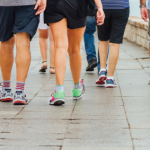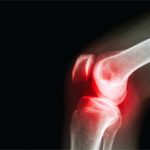Why are winters so hard on arthritis?
It may be intuitive, but researchers now have hard data showing that the number of daylight hours impacts the intensity and duration of physical activity. What this means for arthritis patients is that they, and their rheumatologists, need to find ways to increase patient exercise during the shortened days of winter.
“We know that people are going to be less able to exercise in what we consider bad weather,” says Joe Feinglass, PhD, research professor of medicine at Northwestern University Feinberg School of Medicine in Chicago. “But, one of the really striking findings in our study was the role of daylight hours. There is an enormous drop-off in physical activity related to daylight hours, over and above all other conditions such as temperature, rainfall, and snow.”
Dr. Feinglass is the first author of a study in the Journal of Physical Activity and Health, in which he and his co-authors analyzed Chicago-area weather effects on objectively measured physical activity over a three-year period.1 His team examined 241 patients with rheumatoid arthritis (RA) or osteoarthritis (OA) of the knee. Patients wore an accelerometer on a belt at the natural waistline on the right hip for seven-day intervals at several times during the year. The device calculated vertical acceleration and deceleration, measuring both the frequency and the magnitude of the accelerations. The validity and reliability of the accelerometer have been established in multiple populations, including individuals with arthritis, according to the study authors.
“I thought the study was quite well done and illuminating,” says Eric Matteson, MD, chair of rheumatology at the Mayo Clinic in Rochester, Minn. Not affiliated with the study, Dr. Matteson complimented the strictly defined activity measures with the accelerometer. “I thought that was really very good.”
First Study to Objectively Measure
According to Dr. Feinglass, the study is the first to use objectively measured physical activity rather than questionnaires, which can be unreliable. Additionally, the study is unique in that the same patients wore the accelerometer during multiple seasons, and in different kinds of weather. “For most studies on weather’s effect, different people have been measured in summer versus winter,” he notes.
The researchers showed that sedentary activity in winter increased by 3 to 3.5 hours a day compared with summer. “We’re talking about completely sedentary, meaning reclining or sitting, doing nothing,” Dr. Feinglass says.
The authors reported that dividing sample days at 10 hours of daylight or more showed a 55% difference in median daily moderate or vigorous minutes. And, “the 5.7-hour average decrease in daylight hours between January and June was associated with over 14% fewer daily counts [on the accelerometer], or almost 70 additional minutes of completely sedentary time during the 14.6-hour average daily wear period.” Of note is that monthly daylight hours peaked in July at 15.1 and hit a low in January at 9.1 hours.
The proportion of days affected by each weather condition was analyzed, as well as median minutes of moderate or vigorous activity. The proportion of days in each weather state when participants had zero minutes of any higher-intensity activity were also considered. The authors noted that the results “demonstrate a significant effect of cold weather, rain, and daylight hours on objectively measured activity.”
The study found associations between hot days and heavy rain days with somewhat greater high-intensity activity, but overall lower physical activity levels. For example, on heavy rain days, participants with tailored exercise counseling programs had about one hour less of any physical activity.
“Weather-related restrictions on physical activity are unevenly distributed among participants and may have a differential impact on higher-intensity, sustained bouts of activity,” according to the authors. This was probably because walking significant distances usually occurs outdoors, they note.
What Rheumatologists Can Do
“When we interview our patients, we need to discuss what opportunities they have to find a space for physical activity in the winter,” says Dr. Feinglass. “There has to be some consideration for community resources available for people to walk in an extended way for more than 15 or 20 minutes indoors. Sometimes there are indoor facilities, but most of the time, there is not. This led to our conclusion that there is almost an exercise desert in many of our cities, where people don’t have a physical location to walk safely in the winter months. This is a public policy problem, as well as a clinician’s problem.”
The study authors commented that, “to decide to be active on a dreary day takes commitment and self-discipline.” They suggested that people in apartments or high rises can walk in the halls or safe, well-lit stairwells. Other options include television exercise programs, exercise tapes, and strength-training bands. Additionally, mall walking at large indoor shopping centers is an option.
“Regrettably, many people with arthritis are less likely to get out and exercise,” notes Dr. Matteson. All the more reason for rheumatologists to stress the importance of physical activity to their patients, he says. “You can compensate for some of the bad effects of bad weather on your well-being by getting out there and exercising. That’s the key message.”
Sue Pondrom is a medical journalist based in San Diego.
Reference
1. Feinglass J, Jungwha L, Semanik P, Song J, Dunlop D, Chang R. The effects of daily weather on accelerometer-measured physical activity. J Phys Act Health. 2011;8:934-943.


